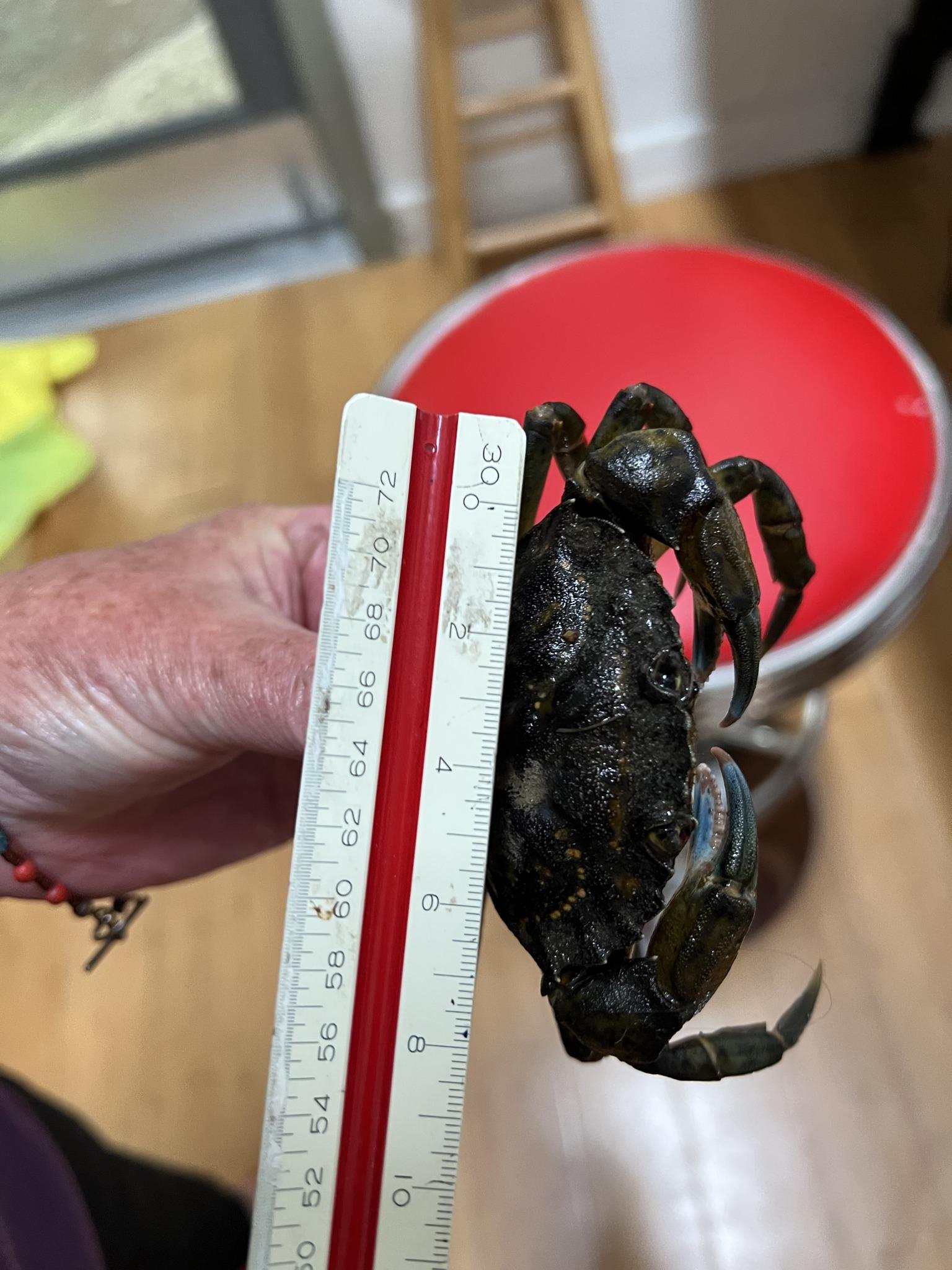Photos
Click to display full size or right-click to save to your device.
ARCHIVED NEWS RELEASE
This document is provided for archival purposes only. Archived documents
do not reflect current WDFW regulations or policy and may contain factual
inaccuracies.
News release Nov. 16, 2023
Media contact: Chase Gunnell, 360-704-0258
Partner efforts show the value of reports from the public in managing this harmful invasive species.
PORT ANGELES – In late October, the Washington Department of Fish and Wildlife (WDFW) received a report from the Coastal Watershed Institute (CWI) of a European green crab (EGC) at Salt Creek Recreation Area. The site is a popular Clallam County park on the Strait of Juan de Fuca.
Within days of the report, WDFW worked with the county to gain access to the area and trap for EGC, catching three additional crabs between Oct. 24 and 26.
“This incident and the rapid response trapping that followed is a prime example of how important reports of suspected European green crabs are for managing this harmful invasive species,” said Justin Bush, WDFW’s Aquatic Invasive Species policy coordinator and Incident Commander for the state’s EGC emergency response.
“We’re grateful to Coastal Watershed Institute for submitting the report and to the tribes, partners, and public who are on the lookout for European green crabs," said Bush.
A team of CWI staff, interns, and volunteers collected the adult European green crab on Oct. 20 in the lower Salt Creek estuary while conducting a nearshore fish use monitoring project. They were accompanied by students and staff from an ecological restoration class at Western Washington University.
“We’re glad the information is of use but crestfallen that European green crabs have arrived at Salt Creek,” said Dr. Anne Shaffer, CWI executive director and lead scientist. “We’ve been seining this site since the early 2000s and this is the first time we’ve observed green crab there.”
The detection is the first in the state’s Western Strait EGC Management Area (PDF), though is not considered abnormal given nearby detections in similar habitat at McKinley Lagoon in Port Angeles and in Dungeness Bay. The Department plans to continue trapping in the spring in coordination with the county and local tribes and partners.
The European green crab is a damaging invasive species that threatens native shellfish, eelgrass, and estuary habitat critical for salmon and many other species. They are shore crabs found in shallow areas—typically less than 25 feet of water—including estuaries, mudflats, intertidal zones, and beaches.
WDFW, co-managers, tribes, shellfish growers, and other agencies and partners have removed more than 285,000 EGC from Washington waters in 2023. More information is available in WDFW’s latest EGC Public Update.
Reports and photos of suspected EGC can be submitted using the form available at wdfw.wa.gov/greencrab or through the Washington Invasive Species Council’s WA Invasives mobile app. Crab identification guides and resources are available on the European green crab online hub and the WDFW EGC webpage.
As a Prohibited Invasive Species, it is illegal to possess a live EGC in Washington. Currently, WDFW is not asking the public to kill suspected EGC. This is to protect native crabs, which are often misidentified.
The public is asked not to tamper with EGC traps, which are usually deployed in shallow areas exposed at low tide. They are typically identified with a bright orange buoy and an official tag or permit.
The Washington Department of Fish and Wildlife works to preserve, protect and perpetuate fish, wildlife and ecosystems while providing sustainable fish and wildlife recreational and commercial opportunities.
